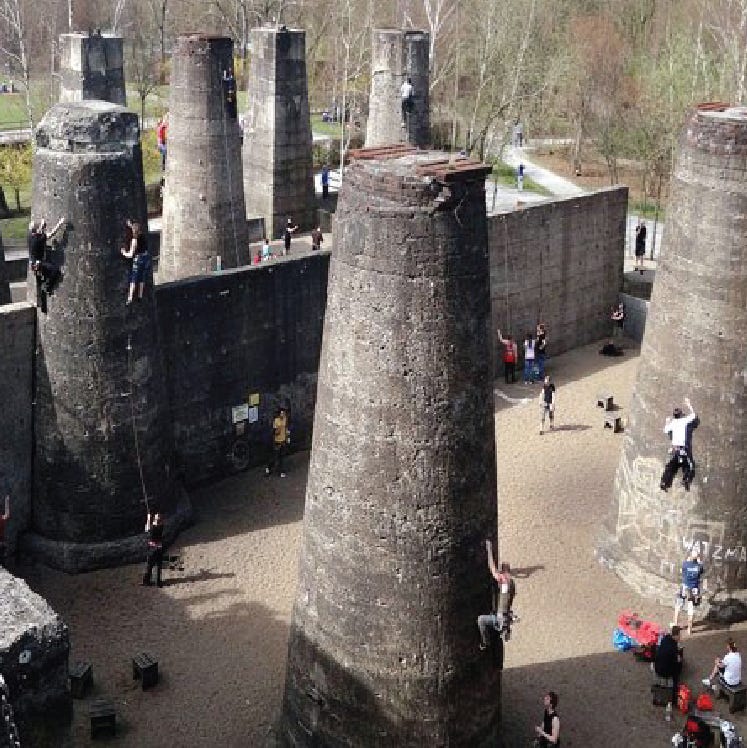The A-word
That's right. Aesthetics. That word that landscape architects are always slightly uncomfortable talking about. But I’ve always been perplexed as to why that is.
I was educated in a time of the reverberations of postmodernism. These shocks are arguably still being felt. Though never explicitly stated I was taught a landscape architecture of flows, systems, performance and data all circling in a loose and relativistic philosophy. Because of that, aesthetics were never on the table. At best we were able to discuss them as a result of a process, of some underlying logic that would give form to a particular appearance. Erik Ghenoiu also talks about this when writing on failings of contemporary architecture; “The manipulation of relations has favoured the distraction technique of making the built place seem like the result of forces and considerations over which the designer has no control” (1) In doing so aesthetics are incorrectly perceived as outside of the designer’s ego or taste to become something that is self evident and unarguable. There is something deeply malicious in this seemingly irrefutable logic.
There have been some valiant attempts to reclaim aesthetics within our profession. Most notably Beth Meyer with her Sustaining Beauty manifesto, arguably one of the most important essays written in landscape architecture, a personal favourite Joan Nassauer’s Messy Ecosystems, Orderly Frames, as well as the built work and the elusive book by Julie Bargmann titled Toxic Beauty. Within those titles we can see that there is a clear emphasis on beauty and reclaiming or redefining that within the context of our profession.
This is where I feel the issue lies. That when we talk about aesthetics we conflate it with only being about beauty, ‘looking good’ or taste. This is still the standing definition of aesthetic, as the Merriam Webster says that it is “a particular theory or conception of beauty or art : a particular taste for or approach to what is pleasing to the senses and especially sight”. My assumption is that, considering we are landscape architects and not aestheticians, we have unquestionably inherited an 18th century understanding of aesthetics and combined with a postmodern disdain, we haven’t turned over that rock in a while. Aesthetics is seen as parochial, boring, old-timey, even weird.
The issue that I have with this definition and the unspoken assumption that aesthetics = beauty, is that I find many people outside of the profession talking about aesthetics in much more interesting ways. Look, I’m not a philosopher or an academic, but I do read broadly and I think there is value in us reconsidering the definition of aesthetics and how it can be re-evaluated within our profession’s particularities.
A simple question. Is something that doesn’t look nice still an aesthetic object and/or does it elicit an aesthetic experience? My answer would be yes or as Graham Harman would put it, genuine aesthetic experiences are merely those that do not bore us (2), inferring that aesthetics is beyond that which is visually pleasing and expands the notion of what is considered an aesthetic object or experience.
With this assumption in mind, I would like us to move beyond the idea that aesthetics is beholden to beauty and plumb the depths of how an expanded appreciation of aesthetics would appear in landscape architecture. The ability to explore landscape architecture that is NOT beautiful, good looking, symbiotic, harmonious and so on, is extremely important.
Furthermore I would argue that, in line with Harman’s previous comment, that the only aspiration landscape architecture should aim for is to is not to bore people, i.e. we must create visceral aesthetic objects and experiences, be they harmonious or challenging, that encompass the broadest purview of emotions.
Image 1: Duisburg-Nord, Peter Latz
Image 2: The Garden of Australian Dreams. Room 4.1.3
Image 3: Yantai Mountain, Lab D+H
Ref 1 Erik Ghenoiu, ‘The World is not Enough’, pg 6
Ref 2 Graham Harman, ‘Object Oriented Ontology’ pg 83






